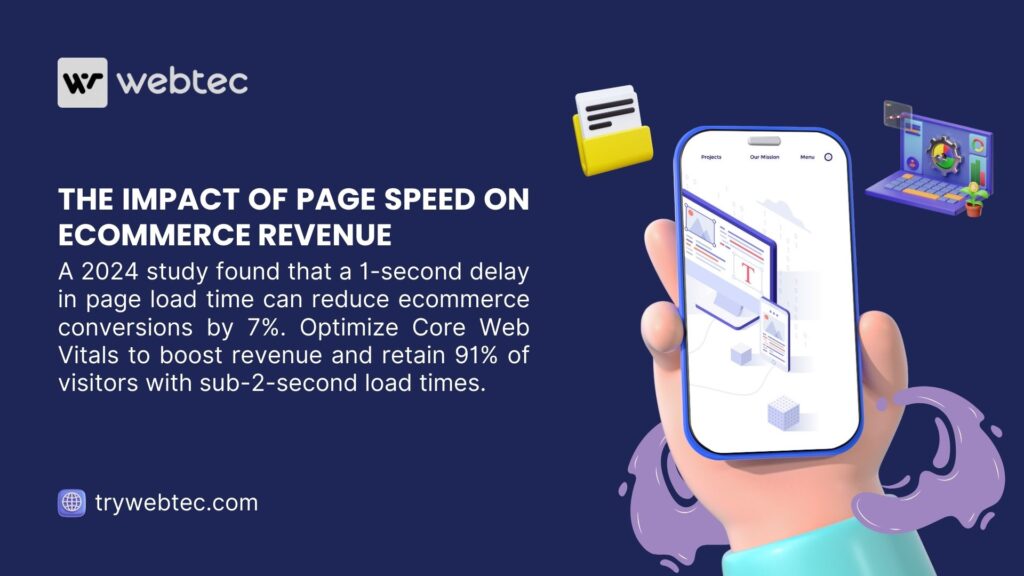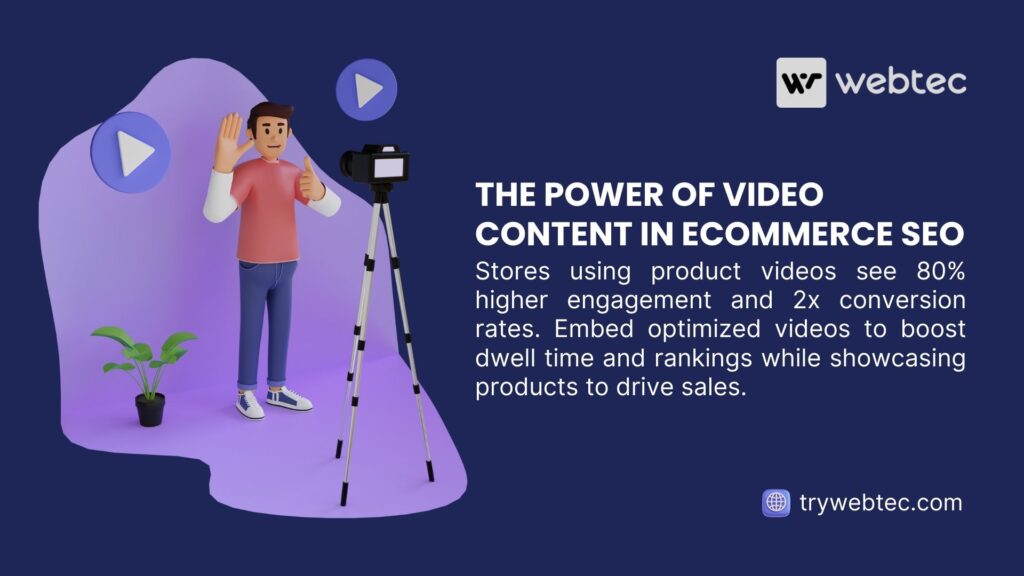Summary
This comprehensive guide reveals how stores with smaller ad budgets consistently outrank competitors through strategic ecommerce SEO implementation:
- Advanced keyword targeting strategies that capture 65% of search queries through long-tail optimization
- Product and category page optimization techniques that drive 3x higher conversion rates than non-optimized pages
- Technical SEO requirements, including Core Web Vitals optimization, that reduce bounce rates by 42%
- Content marketing frameworks that generate 6x higher conversion rates than traditional approaches
- Google Shopping organic listing strategies that provide free product visibility without advertising costs
- Link-building tactics specifically designed for Ecommerce stores to establish domain authority
The Ecommerce SEO Advantage: Why Smaller Budgets Can Win Big
A boutique athletic wear store with a $500 monthly marketing budget consistently outranks Nike and Adidas for specific product searches. Their secret isn’t superior products or massive advertising spend. They mastered SEO for Ecommerce.
While competitors pour millions into paid advertising, smart ecommerce stores leverage organic search to capture high-intent customers at the exact moment they’re ready to buy. SEO for Ecommerce delivers an average conversion rate of 2.8% compared to 0.9% for social media traffic, making it the most cost-effective customer acquisition channel.
The data tells the story clearly: for every $1 spent on ecommerce SEO, stores generate an average return of $3 in revenue. This 300% ROI significantly outperforms traditional advertising channels while building sustainable, long-term growth that doesn’t disappear when budgets get cut.
Why Ecommerce SEO Differs from Standard SEO
Ecommerce SEO operates in a fundamentally different landscape than standard website optimization. While typical SEO focuses on informational content and brand awareness, ecommerce SEO targets transactional search intent with the primary goal of driving sales.
The complexity multiplies when you consider that average ecommerce sites contain thousands of product pages, each requiring individual optimization while maintaining site-wide technical performance. Unlike simple brochure websites, ecommerce platforms must handle dynamic inventory, pricing changes, and complex user journeys from product discovery to checkout completion.
Key Differences in Ecommerce SEO Strategy
| Standard SEO | Ecommerce SEO |
| 50-200 pages typically | 1,000-100,000+ pages |
| Content-focused ranking factors | Product data and schema markup critical |
| Brand awareness and leads | Direct sales and revenue tracking |
| Static content optimization | Dynamic inventory management |
| Simple site architecture | Complex category hierarchies |
The search landscape for Ecommerce has evolved dramatically. Google now prioritizes user experience signals, mobile responsiveness, and Core Web Vitals as ranking factors. Additionally, the emergence of Google Shopping organic listings has created new opportunities for product visibility without paid advertising.
IMAGE:
Large Title: Webtec: Your Ecommerce SEO Specialists
Small Title: Transforming User Experience Into Revenue Growth
Description: We specialize in ecommerce SEO that prioritizes user experience across all devices. Our expert team optimizes your Core Web Vitals, ensures mobile responsiveness, and integrates your products into multiple marketplaces for free – maximizing visibility and driving sales without paid ads.
CTA button: Get Your Free SEO Audit
Understanding these distinctions shapes every aspect of ecommerce SEO strategy, from keyword research methodologies to content creation priorities and technical implementation requirements.
Mastering Keyword Targeting for Transactional Search
Keyword research for ecommerce requires a fundamentally different approach than traditional SEO. While standard SEO emphasizes informational keywords, ecommerce success depends on capturing transactional search intent when customers are ready to purchase.
The Ecommerce Keyword Hierarchy
Successful ecommerce keyword strategies follow a structured hierarchy that matches customer purchase intent:
| Intent Level | Keyword Type | Example | Conversion Rate |
| High Intent | Product-specific | “Nike Air Max 270 size 10” | 8.2% |
| Medium Intent | Category + modifier | “running shoes for women” | 4.1% |
| Low Intent | Category general | “athletic footwear” | 1.8% |
| Research Intent | Informational | “best running shoes 2025” | 0.6% |
Long-tail keywords now account for 65% of search queries and convert at 2.5 times the rate of broader terms. This shift toward specificity means ecommerce stores can compete effectively against larger competitors by targeting precise, purchase-ready searches.
Advanced Keyword Research Techniques
Start with seed keywords that directly describe your products, then expand using customer language patterns. Google’s autocomplete function reveals real search behavior, while the “Related searches” section at the bottom of search results provides additional targeting opportunities.
Competitor Keyword Analysis Strategy: Use tools like Semrush’s Organic Research feature to identify keywords your competitors rank for. This reveals gaps in your keyword targeting and opportunities for competitive advantage.
Search Volume vs. Commercial Intent Balance: Prioritize keywords with strong commercial intent over high search volume. A keyword generating 100 searches monthly with 8% conversion rate outperforms a 10,000 search keyword with 0.5% conversion rate.
Seasonal and Trending Keyword Integration: Monitor seasonal search patterns and emerging trends in your industry. Keywords like “Black Friday deals” or “back to school supplies” provide massive but time-limited opportunities.
Optimizing Category vs Product Pages
The relationship between category and product page optimization forms the foundation of Ecommerce SEO success. Each page type serves distinct purposes in the customer journey and requires specific optimization approaches.
Category Page Optimization Strategy
Category pages target broader, high-intent keywords that capture customers who know what type of product they want but haven’t selected a specific item. These pages should optimize for terms like “wireless headphones” or “winter jackets” rather than specific product names.
Essential Category Page Elements:
| Element | SEO Impact | Implementation |
| H1 Tag with Target Keyword | High | Include primary category keyword naturally |
| Unique Category Descriptions | High | 200-300 word descriptions with related keywords |
| Product Grid Optimization | Medium | Proper image alt tags and structured data |
| Faceted Navigation | Medium | SEO-friendly filter URLs with proper canonicalization |
| Internal Linking | High | Link to related categories and featured products |
Avoid thin content on category pages. Instead of generic manufacturer descriptions, create unique, valuable content that explains product benefits, use cases, and buying considerations. This content should target related keywords while providing genuine value to visitors.

Product Page Optimization Framework
Product pages require more detailed optimization since they target specific, high-converting keywords. These pages must balance SEO requirements with conversion optimization to maximize both traffic and sales.
Critical Product Page Optimizations:
| SEO Element | Conversion Impact | Best Practice |
| Product Title | 9.2% CTR increase | Include brand, product type, key features |
| Product Description | 15% conversion boost | Unique content highlighting benefits |
| Image Alt Tags | 8% organic traffic increase | Descriptive keywords for product images |
| Customer Reviews | 62% revenue increase | Encourage authentic review generation |
| Schema Markup | 17% click improvement | Implement product schema for rich snippets |
Product descriptions should never rely on manufacturer content. Google penalizes duplicate content, and unique descriptions significantly outperform generic ones in both rankings and conversions.
User-Generaated Content Integration: Customer reviews, Q&A sections, and photo submissions create fresh, keyword-rich content that search engines value. Reviews help capture natural language keywords that potential customers use in their searches.
Technical SEO: Speed, Core Web Vitals, and Structured Data
Technical SEO forms the foundation that enables all other ecommerce optimization efforts. Poor technical performance can completely undermine excellent content and keyword targeting, making this the highest priority for any ecommerce SEO strategy.
Core Web Vitals Optimization for Ecommerce
Google’s Core Web Vitals directly impact both search rankings and user experience. Ecommerce sites face unique challenges due to product images, shopping cart functionality, and dynamic content loading.
2025 Core Web Vitals Benchmarks:
| Metric | Good Performance | Needs Improvement | Poor Performance |
| Largest Contentful Paint (LCP) | ≤ 2.5 seconds | 2.5-4.0 seconds | > 4.0 seconds |
| Interaction to Next Paint (INP) | ≤ 200 milliseconds | 200-500 milliseconds | > 500 milliseconds |
| Cumulative Layout Shift (CLS) | ≤ 0.1 | 0.1-0.25 | > 0.25 |
The average retention rate of ecommerce sites that load within 2 seconds is 91%. When page load time increases from 1 to 6 seconds, bounce rate spikes by 106%. These statistics demonstrate why Core Web Vitals optimization directly impacts revenue.
Critical Technical Optimizations:
| Optimization Area | Impact on Performance | Implementation Priority |
| Image Compression | 40% speed improvement | High – Use WebP format |
| JavaScript Minification | 25% speed improvement | High – Remove unused code |
| Browser Caching | 60% return visitor speed boost | High – Set proper cache headers |
| CDN Implementation | 35% global speed improvement | Medium – Geographic distribution |
| Database Optimization | 30% dynamic page improvement | Medium – Query optimization |
Mobile-First Optimization Requirements
Mobile commerce accounts for 68% of all ecommerce traffic, yet mobile users convert 15% less frequently than desktop users due to poor mobile experiences. This gap represents a massive optimization opportunity.
Mobile Optimization Checklist:
Responsive design that adapts seamlessly to all screen sizes Touch-friendly navigation with appropriately sized buttons Simplified checkout process with mobile payment options Fast loading times optimized for mobile networks Thumb-friendly product image galleries and zoom functionality
Sites optimized for mobile-first indexing convert at rates 1.5 times higher than non-optimized sites. Google prioritizes mobile-friendly pages in search results, making mobile optimization essential for visibility.
Structured Data Implementation
Structured data markup helps search engines understand product information and can significantly enhance search result appearance through rich snippets.
Essential Schema Types for Ecommerce:
| Schema Type | SERP Enhancement | Implementation Value |
| Product Schema | Price, availability, ratings | High – Increases CTR by 17% |
| Review Schema | Star ratings in search results | High – Builds trust and credibility |
| Breadcrumb Schema | Navigation path display | Medium – Improves user experience |
| Organization Schema | Brand information display | Medium – Establishes authority |
| Local Business Schema | Store location and hours | High for local businesses |
Implementing product schema markup increases click-through rates by an average of 17% while also providing Google with structured product information for better indexing and potential inclusion in Google Shopping organic results.
Link Building Strategies for Ecommerce
Link building for ecommerce requires specialized strategies that differ significantly from standard SEO link acquisition. Ecommerce sites must build authority while navigating unique challenges like product-focused content and competitive markets.
Ecommerce-Specific Link Building Opportunities
The most effective ecommerce link building focuses on relationships that naturally connect to product sales and industry expertise.
High-Value Link Sources:
| Link Source Type | Domain Authority Impact | Acquisition Difficulty |
| Industry Publications | High – 15-20 point boost | High – Requires expertise content |
| Supplier/Manufacturer Sites | Medium – 8-12 point boost | Medium – Relationship-based |
| Customer Review Sites | Medium – 10-15 point boost | Low – Product submission required |
| Industry Association Directories | Medium – 5-10 point boost | Low – Membership required |
| Influencer Collaborations | High – 12-18 point boost | High – Requires valuable partnerships |
Content-Driven Link Building: Create comprehensive buying guides, industry reports, and trend analyses that naturally attract links from industry publications and blogs. For example, a comprehensive “2025 Sustainable Fashion Guide” can attract links from environmental blogs, fashion publications, and industry associations.
Product-Focused Link Acquisition
Product reviews and comparisons offer unique link building opportunities that traditional SEO cannot access.
Review and Comparison Strategies: Send products to relevant bloggers and industry experts for honest reviews. These natural product mentions often result in high-value links with strong relevance signals.
Strategic Partnership Development: Build relationships with complementary brands for cross-promotion opportunities. A coffee roaster partnering with a mug manufacturer can create mutually beneficial link exchanges that provide value to both audiences.
User-Generated Content Amplification: Encourage customers to share product photos and experiences on social media, then reach out to relevant publications to feature these authentic customer stories.
Content Marketing for Online Stores
Content marketing for ecommerce serves dual purposes: attracting organic traffic through valuable information and nurturing potential customers through the purchase journey. Companies that prioritize content marketing experience six times higher conversion rates than those that don’t.
Strategic Content Framework
Successful ecommerce content marketing balances SEO value with sales support, creating content that ranks well while driving conversions.
Content Type Performance Analysis:
| Content Type | Organic Traffic Impact | Conversion Rate | Implementation Effort |
| Product Comparison Guides | 85% traffic increase | 12.3% conversion | High |
| How-to and Tutorial Content | 65% traffic increase | 8.7% conversion | Medium |
| Industry Trend Reports | 120% traffic increase | 4.2% conversion | High |
| Customer Success Stories | 45% traffic increase | 15.1% conversion | Low |
| Seasonal Buying Guides | 95% traffic increase | 11.8% conversion | Medium |
Content Gap Analysis Strategy: Research competitor content to identify opportunities they’re missing. If competitors focus on product features, create content about product applications and use cases.
User-Generated Content Optimization
User-generated content provides authentic, keyword-rich material that search engines value while building trust with potential customers.
UGC Implementation Tactics:
Customer review optimization through review request automation and response management, Photo contest campaigns that generate product images and social proof Q&A section development that captures long-tail keyword searches. Customer story features that provide detailed use case examples
User-generated content increases revenue per visitor by 62% while providing natural keyword optimization opportunities that traditional content cannot match.
Blog Content Strategy
Ecommerce blogs should focus on purchase-intent content rather than general industry information.
High-Converting Blog Topics: “Best [Product Category] for [Specific Use Case]” “How to Choose the Right [Product] for [Customer Type]” “[Product] vs [Competitor Product]: Complete Comparison” “[Number] Ways to Use [Product] for [Benefit]”
This approach ensures blog content supports sales goals while capturing valuable organic search traffic.
Leveraging Google Shopping Organic Listings
Google Shopping organic listings represent one of the most significant opportunities in ecommerce SEO. These free product placements can appear in search results, the Shopping tab, and even within AI-powered search experiences without advertising costs.
Understanding Google Shopping Evolution
Google Shopping organic listings have expanded dramatically. In 2024, product grids appeared in 15% of US search results on mobile devices and 15% on desktops & and are expected to go towards 27% by the end of 2025. When search queries qualify for organic shopping results, they can occupy up to half of the organic space on page one.
Google Shopping Placement Opportunities:
| Placement Location | Visibility Impact | Setup Requirements |
| Search Results Product Grid | High – 50% of page one space | Google Merchant Center, Product Feed |
| Shopping Tab Free Listings | Medium – Dedicated shopping searches | Product Feed Optimization |
| Google Images Product Results | Medium – Visual search traffic | High-quality product images |
| YouTube Shopping Integration | Growing – Video commerce expansion | Video content with product links |
| AI Overview Product Integration | Emerging – Future-focused placement | Optimized product data |
Google Merchant Center Optimization
Success in Google Shopping organic listings requires comprehensive Google Merchant Center optimization beyond basic product feed submission.
Critical Feed Optimization Elements:
| Feed Attribute | Impact on Visibility | Optimization Priority |
| Product Title | High – Primary ranking factor | Critical – Include brand, type, key features |
| Product Description | Medium – Supporting relevance signal | High – Unique, keyword-optimized content |
| Product Category | High – Determines eligible searches | Critical – Use Google’s product taxonomy |
| Product Images | High – Click-through rate driver | High – Multiple high-resolution images |
| Price and Availability | Critical – Accuracy required | Critical – Real-time synchronization |
Product Feed Best Practices: Update product feeds at least daily to maintain accurate pricing and inventory levels. Google penalizes feeds with outdated information, which can impact overall account performance.
Use Google’s product taxonomy categories rather than your internal category structure. This ensures proper matching with relevant search queries.
Include detailed product attributes like color, size, material, and brand to capture specific search variations and improve relevance scoring.
Organic Shopping SEO Strategy
Optimizing for organic shopping results requires coordinated efforts across your website and Google Merchant Center.
Website Optimization for Shopping Results: Implement product schema markup on all product pages to provide Google with structured data about your products.
Create unique, detailed product descriptions that include relevant keywords naturally while avoiding keyword stuffing.
Optimize product images with descriptive file names and alt tags that include relevant product keywords.
Performance Monitoring and Improvement: Use Google Search Console’s “Merchant listings” filter to track organic shopping performance and identify optimization opportunities.
Monitor click-through rates and conversion data in Google Analytics 4 under the “Organic Shopping” channel to measure revenue impact.
Track your “Top Quality Store” badge status in Google Merchant Center, as this designation improves visibility in shopping results.
AI Changes in Google Search and Ecommerce Impact
Artificial intelligence has fundamentally transformed how Google processes and displays search results, with significant implications for Ecommerce SEO strategies. The introduction of AI Overviews and enhanced search features requires new optimization approaches.
AI-Powered Search Experience Changes
Google’s AI integration prioritizes user experience metrics and content quality signals more heavily than traditional ranking factors. 73% of marketers plan to use more AI in SEO within the next year, but the key is understanding how AI affects search behavior and results presentation.
AI Impact on Ecommerce Search:
| AI Feature | Impact on Ecommerce | Optimization Response |
| AI Overviews | Reduced organic click-through rates | Focus on featured snippet optimization |
| Enhanced Product Understanding | Better product matching | Improve product data accuracy |
| Conversational Search | More natural language queries | Optimize for question-based keywords |
| Visual Search Integration | Image-based product discovery | Enhance image optimization |
| Personalized Results | Customized search experiences | Focus on user experience metrics |
Voice Search Optimization
Voice commerce sales are projected to reach $40 billion in the United States by 2025. Optimizing for voice search requires understanding conversational query patterns and natural language processing.
Voice Search Optimization Strategies: Target question-based keywords like “What’s the best running shoe for flat feet?” Use natural, conversational language in product descriptions and content. Optimize for local search queries since many voice searches have local intent. Create FAQ sections that directly answer common customer questions
Voice search queries tend to be longer and more specific than typed searches, making them highly valuable for Ecommerce stores targeting long-tail keywords.
Structured Data for AI Understanding
AI-powered search relies heavily on structured data to understand product information and relationships. Enhanced structured data implementation becomes critical for maintaining visibility in AI-driven search results.
Advanced Schema Implementation: Use aggregate rating schema to display star ratings in search results. Implement FAQ schema for question-and-answer content Add organization schema for brand authority signals. Create product variant schema for items with multiple options
The goal is to provide Google’s AI systems with comprehensive, structured information that enables better understanding and presentation of your products in various search formats.
Performance Measurement and ROI Analysis
Measuring ecommerce SEO success requires tracking metrics that directly correlate with business outcomes rather than vanity metrics that don’t drive revenue.
Key Performance Indicators
Essential Ecommerce SEO Metrics:
| Metric Category | Primary KPI | Target Benchmark | Tracking Method |
| Traffic Quality | Organic Conversion Rate | 2.8% average | Google Analytics 4 |
| Revenue Impact | Revenue from Organic Search | 30-35% of total revenue | Enhanced Ecommerce Tracking |
| Visibility | Keyword Rankings | Top 3 positions for target keywords | Rank tracking tools |
| Technical Performance | Core Web Vitals Scores | All “Good” ratings | Google Search Console |
| Content Performance | Product Page Engagement | 60+ seconds average session | Google Analytics 4 |
ROI Calculation Framework
Calculate SEO ROI using both direct revenue attribution and long-term value metrics.
Direct ROI Calculation: SEO ROI = (Revenue from Organic Search – SEO Investment) / SEO Investment × 100
Long-term Value Considerations: Factor in customer lifetime value, brand awareness impact, and reduced paid advertising dependency when calculating total SEO value.
Organic search typically delivers a 5:1 return on investment for ecommerce businesses, meaning $5 in revenue for every $1 spent on SEO activities.
Competitive Analysis and Benchmarking
Regular competitive analysis helps identify opportunities and validate strategy effectiveness.
Competitive Monitoring Areas: Track competitor keyword rankings and identify new targeting opportunities. Monitor competitor content strategies and identify gaps. Analyze competitor technical performance and Core Web Vitals scores. Observe competitor Google Shopping presence and optimization tactics
Use tools like Semrush or Ahrefs to track competitor performance monthly and adjust strategies based on market changes and competitive movements.
Comparing SEO vs PPC Performance
Understanding the relationship between SEO and PPC helps optimize budget allocation and maximize overall marketing effectiveness for ecommerce stores.
Performance Comparison Analysis
SEO vs PPC Ecommerce Performance:
| Performance Metric | SEO Performance | PPC Performance | Long-term Advantage |
| Average Conversion Rate | 2.8% | 2.3% | SEO |
| Customer Acquisition Cost | $45 average | $67 average | SEO |
| Click-Through Rate | 3.2% for position 1 | 2.1% average | SEO |
| Time to Results | 3-6 months | Immediate | PPC |
| Sustainability | Builds over time | Requires ongoing spend | SEO |
| Targeting Precision | Broad keyword targeting | Exact audience targeting | PPC |
SEO nearly always converts at a higher rate than PPC, with the gap being particularly large in certain industries. Financial services see SEO convert customers at 7.3x the rate of PPC, while ecommerce generally sees 1.2x higher conversion rates from SEO traffic.
Budget Allocation Strategy
Optimal Budget Distribution: 60% SEO investment for long-term growth and sustainable traffic 40% PPC investment for immediate results and testing
This allocation maximizes both short-term revenue and long-term growth while allowing PPC data to inform SEO keyword targeting.
Integration Opportunities: Use PPC data to identify high-converting keywords for SEO targeting. Leverage SEO content for landing page development in PPC campaigns. Coordinate messaging across both channels for a consistent brand experience
Advanced Ecommerce SEO Strategies
Advanced Ecommerce SEO requires sophisticated approaches that go beyond basic optimization to capture complex search behaviors and competitive advantages.
International Ecommerce SEO
For stores serving multiple markets, international SEO requires careful coordination of language, currency, and cultural considerations.
International SEO Implementation:
| Implementation Area | Technical Requirement | Business Impact |
| Hreflang Tags | Proper language and region targeting | Prevents duplicate content issues |
| Currency Localization | Local pricing display | Improves conversion rates |
| Cultural Content Adaptation | Localized product descriptions | Enhances user experience |
| Local Payment Methods | Region-appropriate checkout options | Reduces cart abandonment |
| International Hosting | CDN or local server presence | Improves page speed globally |

Advanced Technical Implementation
Enterprise-Level Technical Optimizations: Implement dynamic rendering for JavaScript-heavy sites to ensure search engine crawlability. Use progressive web app (PWA) technology to improve mobile user experience and loading speeds. Develop advanced internal linking strategies using automated related product suggestions. Create sophisticated URL structure management for large product catalogs
Automation and Scaling
Large ecommerce operations require automated SEO processes to maintain optimization across thousands of products.
Automation Opportunities: Automated meta tag generation based on product attributes, Dynamic schema markup implementation for new products, Automated internal linking based on product relationships, Real-time Core Web Vitals monitoring and alerting systems
Key Takeaways
SEO for Ecommerce requires a comprehensive approach that addresses unique challenges while leveraging specific opportunities available to online stores. Success depends on understanding the fundamental differences between Ecommerce and traditional SEO.
The most successful ecommerce SEO strategies focus on technical excellence, user experience optimization, and strategic content creation that supports both search visibility and conversion goals. Core Web Vitals optimization, mobile-first design, and structured data implementation form the technical foundation.
Keyword targeting must prioritize transactional intent and long-tail specificity rather than high-volume general terms. Product and category page optimization requires unique content creation and strategic internal linking to maximize both search visibility and user experience.
Content marketing for ecommerce should directly support the purchase journey while building topical authority. User-generated content and strategic blog content creation provide sustainable competitive advantages.
Google Shopping organic listings represent massive untapped opportunities for many ecommerce stores. Proper Google Merchant Center optimization and product feed management can generate significant free traffic and sales.
The integration of AI in search results requires enhanced focus on user experience metrics, natural language optimization, and comprehensive structured data implementation.
Most importantly, ecommerce SEO success requires viewing optimization as an investment in long-term business growth rather than a short-term traffic generation tactic. The combination of technical excellence, strategic content creation, and performance measurement creates sustainable competitive advantages that compound over time.For ecommerce stores ready to implement these comprehensive SEO strategies but lacking internal expertise, partnering with specialists who understand the unique requirements of online retail can accelerate results while avoiding costly mistakes. Webtec’s SEO services combine technical expertise with ecommerce-specific knowledge to deliver measurable growth for online businesses looking to dominate their markets through organic search.



